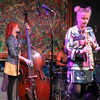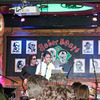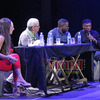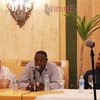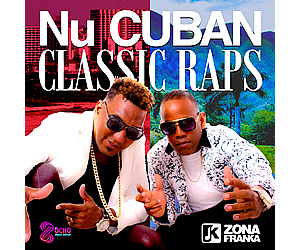Indice - Table of contents
Lo Nuevo[hide]
Reportes: From The St... : Jazz Plaza ...
Fotos: Tom Ehrlich : Irakere 50th Annivers...
Fotos: Tom Ehrlich : Irakere
Resenas: Joey Altruda Presents: El Gran ...
Reportes: From The St... : Cubadisco 2...
Timbapedia: 09. Interviews -... : Carlos del Pino ...
Fotos: Tom Ehrlich : 2023 Monterey Jazz Fe...
Fotos: Tom Ehrlich : 2023 Monterey Jazz Fe...
Fotos: Tom Ehrlich : 2023 Monterey Jazz Fe...
Fotos: Tom Ehrlich : 2023 Monterey Jazz Fe...
Grupos: Tirso Duarte
Grupos: Tirso Duarte : Discography
Grupos: Charanga Habaner... : 8. El bla bla bla
Grupos: Pupy y los que S... : Tirso Duarte
Fotos Del Día [hide]
The Roots of Timba, Pt I - 1951-Me dijo que sí y le dije que no
1951 Arsenio Rodríguez - Me dijo que sí y le dije que no
xx0x 0xxx 0xx0 xx0x 2-3 son clave
0x00 xxxx 0x00 xxxx
0xx0 xxxx 0x00 xxxx MIDI example
bassist: Lázaro Prieto
source: Emiliano Echeverría
notes: This beautifully melodic 2-clave bass tumbao doesn't mark the clave. If you analyze in minute detail, you might even say that it's "contraclave", a term which will become much more important when we get to timba. But if we shift our focus from the bass to the overall piece of music, Me dijo que sí is one of Arsenio's most extraordinary creations. If you're a student of pop music harmony, you'll find yourself hard-pressed to find an earlier example of its chord progression: V/4 - I/5 - bVII - IV/6 - V. Even if you have no musical training, just listen to the harmonies and you'll intuitively understand what I'm talking about. The bVII chord, sometimes thought of as the "Hey Jude chord", was not the invention of late-60s Rock & Roll -- Schubert did wonderful things with it in the mid-1800s -- but it was the rock-and-rollers who took it to the bank -- selling millions and millions of records by going around the circle of 5ths in reverse.
Arsenio and the Art of Quoting
But it's not the harmony that leaps out at you when you first listen to this track-- it's the "quote" from Tres lindas cubanas (quoted song - source) by Sexteto Habanero. Quoting is one of the few things that Arsenio didn't invent. As Echeverría puts it, "quoting in Cuban music seems to be as old as Cuban music itself. Danzones were quoting everyone in sight for decades from the 1880s onward...". Jazz musicians like Charlie Parker also made constant use of quotes in the 40s and 50s, but in the world of Cuban music, Arsenio brought quoting to the forefront in a way that would be heavily-emulated by the timberos. It's difficult to find a single timba recording that doesn't have at least one quote in the coros, the guías, the mambos, or the solos, and it's often a direct or second hand quote from Arsenio himself. Quoting, be it of the conscious or subconscious variety, is one of the primary building blocks of popular music of all genres. For example, just as John Lennon's Come Together (quote - source) borrows its opening line from Chuck Berry (quote - source), Manolín bases one of the key portions of his masterpiece Dios sabe (quote - source) on Rubén Blades' Plástico (quote - source) -- and Juan Carlos González quotes las mismísima Tres lindas cubanas in Superturística (quote - source). Elvis Costello has no competition for the title of cleverest and most virtuosic English-language quoter, but among the timberos, it's a dogfight. From Calzado (quoted song - source -- quote - source) to Issac (quoted song - source -- quote - source) the art of the quote is their modus operandi.
But don't get me started on timba -- we're talking about Arsenio here! Anyone can quote. Well-known terms for uninspired quoting include "ripoff", "lifted from" "plagiarized from", and so on. But a truly brilliant quote is worth its weight in gold, and that's what we have in Me dijo que sí y le dije que no.
Why is this a "truly brilliant" quote rather than a "ripoff"? Listen again. Now, listen to the original. Get it? Tres lindas cubanas was itself a pop harmony innovation in its time: IV-I-II-V, but Arsenio juxtaposes its melody against his own pop harmony innovation, V/4 - I/5 - bVII - IV/6 - V, with this wonderful result. After the initial surprise of discovering that the quoted song fits against the current progression comes the rush of hearing it reharmonized in an exciting new way.










